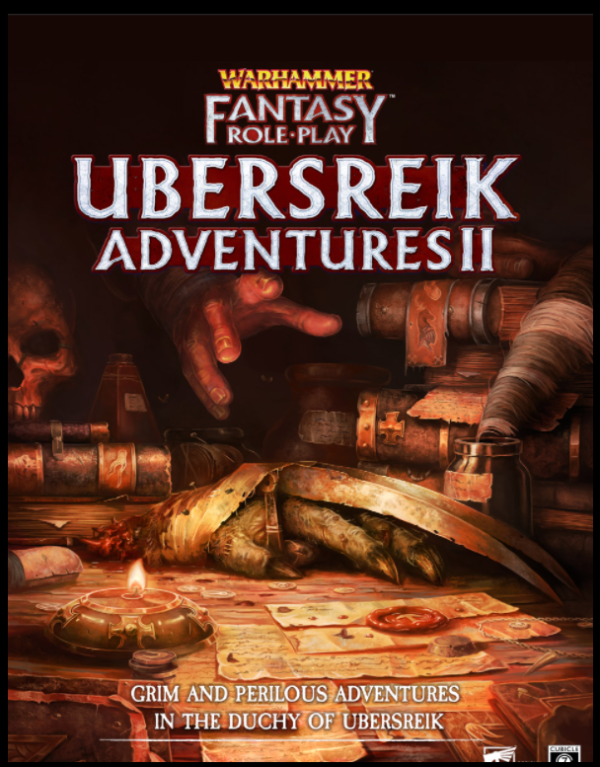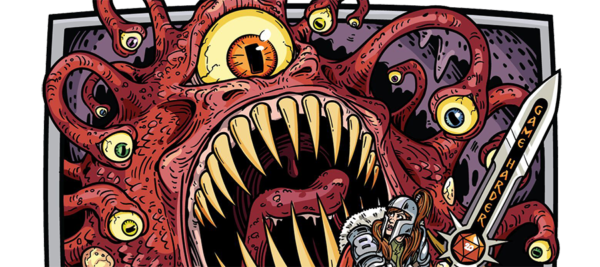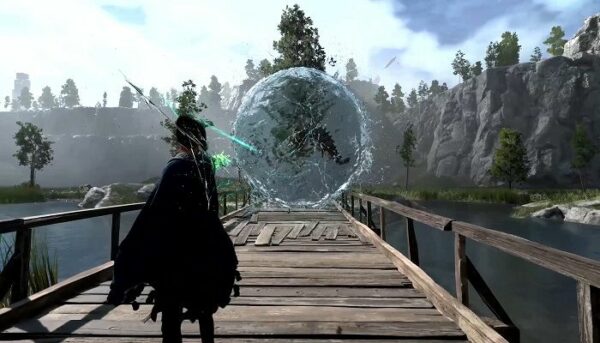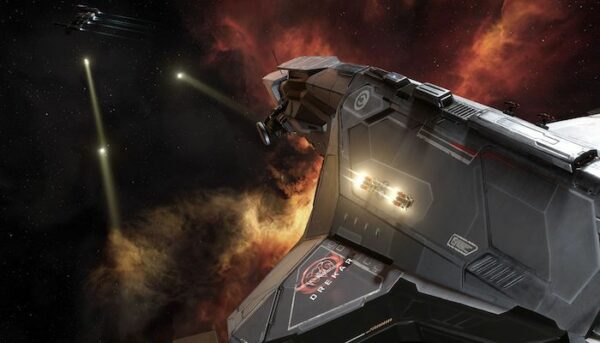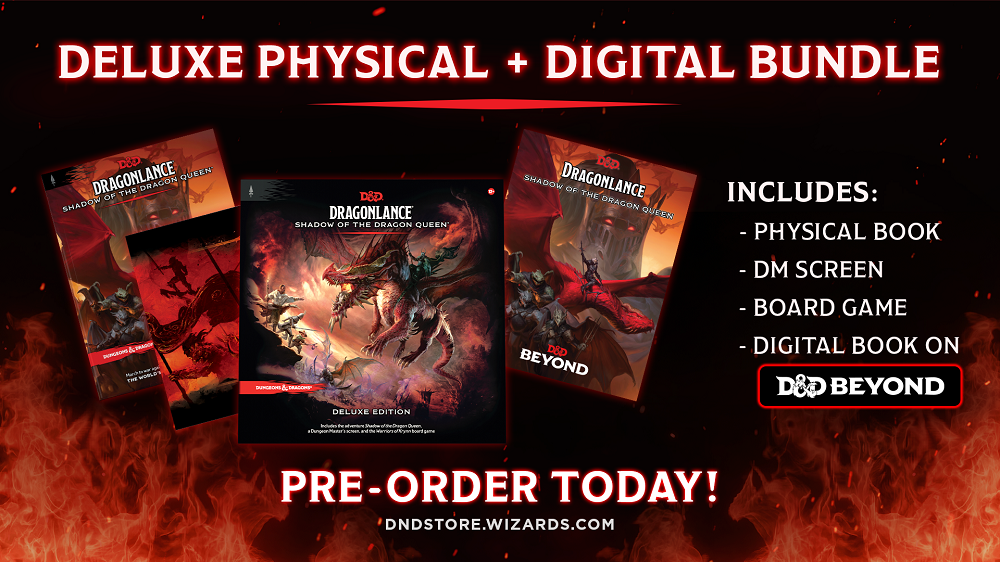
WotC is experimenting as it brings the world of Krynn and the classic Dragonlance setting to 5th Edition. Those experiments take a few different forms.

The Dragonlance: Shadow of the Dragon Queen Combo Bundle
The first is one that fans have been clamoring for—bundles that combine the physical and digital versions of a book. Earlier this year, WotC purchased D&D Beyond, which has been producing digital content for D&D. Now the much-requested bundles are debuting with Dragonlance: Shadow of the Dragon Queen, and the digital book will unlock on November 22 for those who pre-order the bundle, two weeks earlier than the official release date.
The other experiment is pairing the RPG adventure with a board game. Dragonlance: Warriors of Krynn can be played alone or in combination with the RPG, which similarly can stand independent of the board game. Why create two different games for one story?
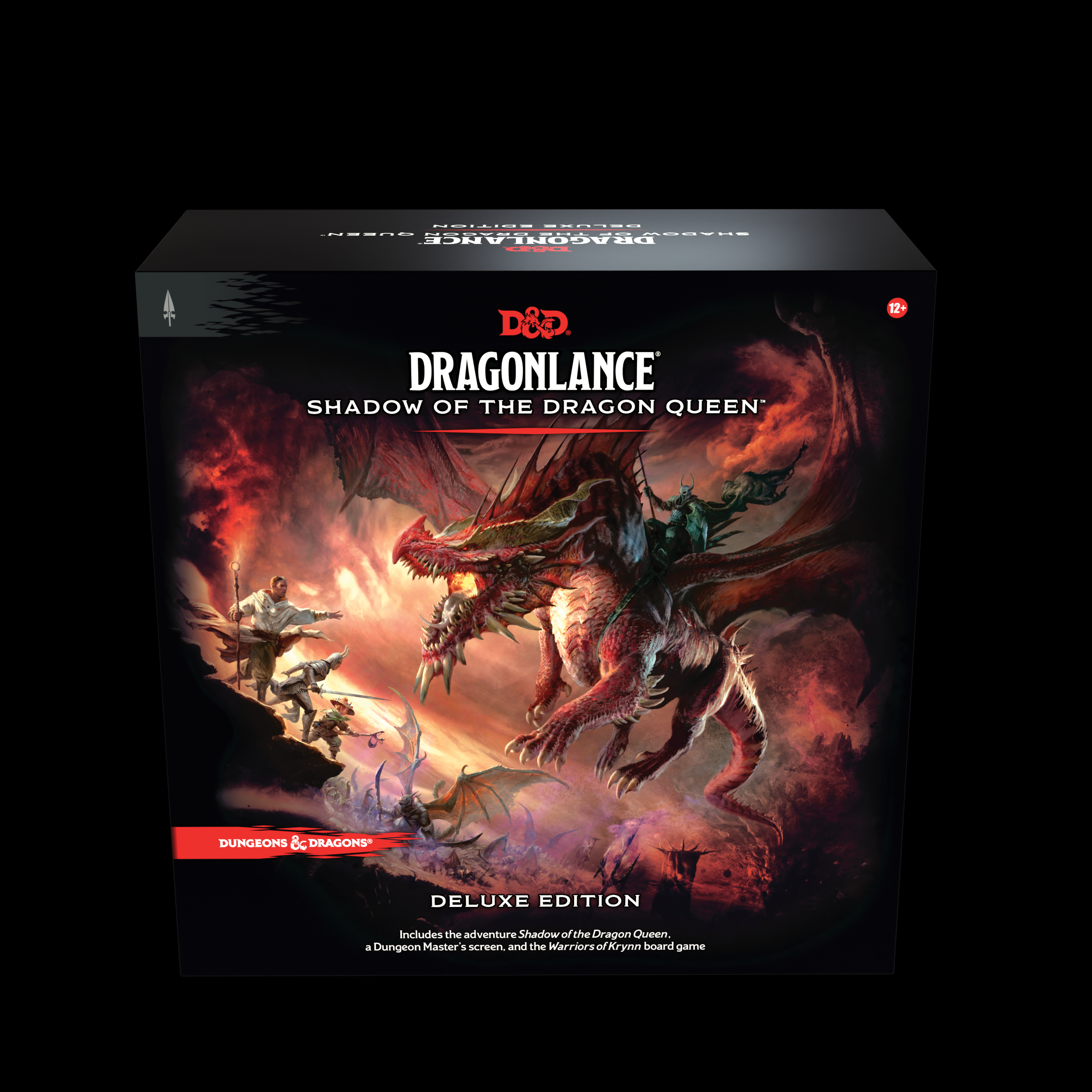
Dragonlance: Shadow of the Dragon Queen
“[Dragonlance] is a war adventure. Characters will find themselves flung into battle,” said F. Wes Schneider, lead designer for DL:SotDQ. The board game is one way to create that feeling of mass combat.
The D&D team created new rule subsystems for battles that are taking place in the middle of larger conflicts. When you get to the mass combat sections in DL:SotDQ it notes when you can switch to DL:WoK if you have both. If you only have DL:SotDQ, then it instructs the DM how to proceed.
Speaking of rules, DL:SotDQ uses the current 5E rule set. D&D One is still being play-tested, but Schneider emphasized again that D&D One will be fully compatible with existing D&D adventures. If you do have both DL:SotDQ and DL:WoK, what happens during the board game interludes matters. Whether players succeed or fail will affect what happens next in the RPG. “We think of these two experiences as additive to each other,” said Greg Tito, senior communications manager for WotC.
To give a sense of how it works, Schneider compared how things play out with the new rule subsystem as well as how it connects to the optional board game to the Lord of the Rings: Return of the King. Specifically, he referenced Eowyn fighting the Witch King: A giant battle is taking place, but the story is focusing on this one part of the battle.
The new RPG mass combat rule subsystem and board game were both made to emphasize Dragonlance‘s defining theme. “It’s best known for its iconic war,” said Schneider. “It’s caught up in this sweeping conflict called the War of the Lance, where the forces of Takhisis, the evil dragon queen, are sweeping across a world that has already been reeling from a planet-spanning apocalypse and now they find themselves just as they’re starting to emerge back into a new era, these oncoming dragon armies and forces of this evil queen.”
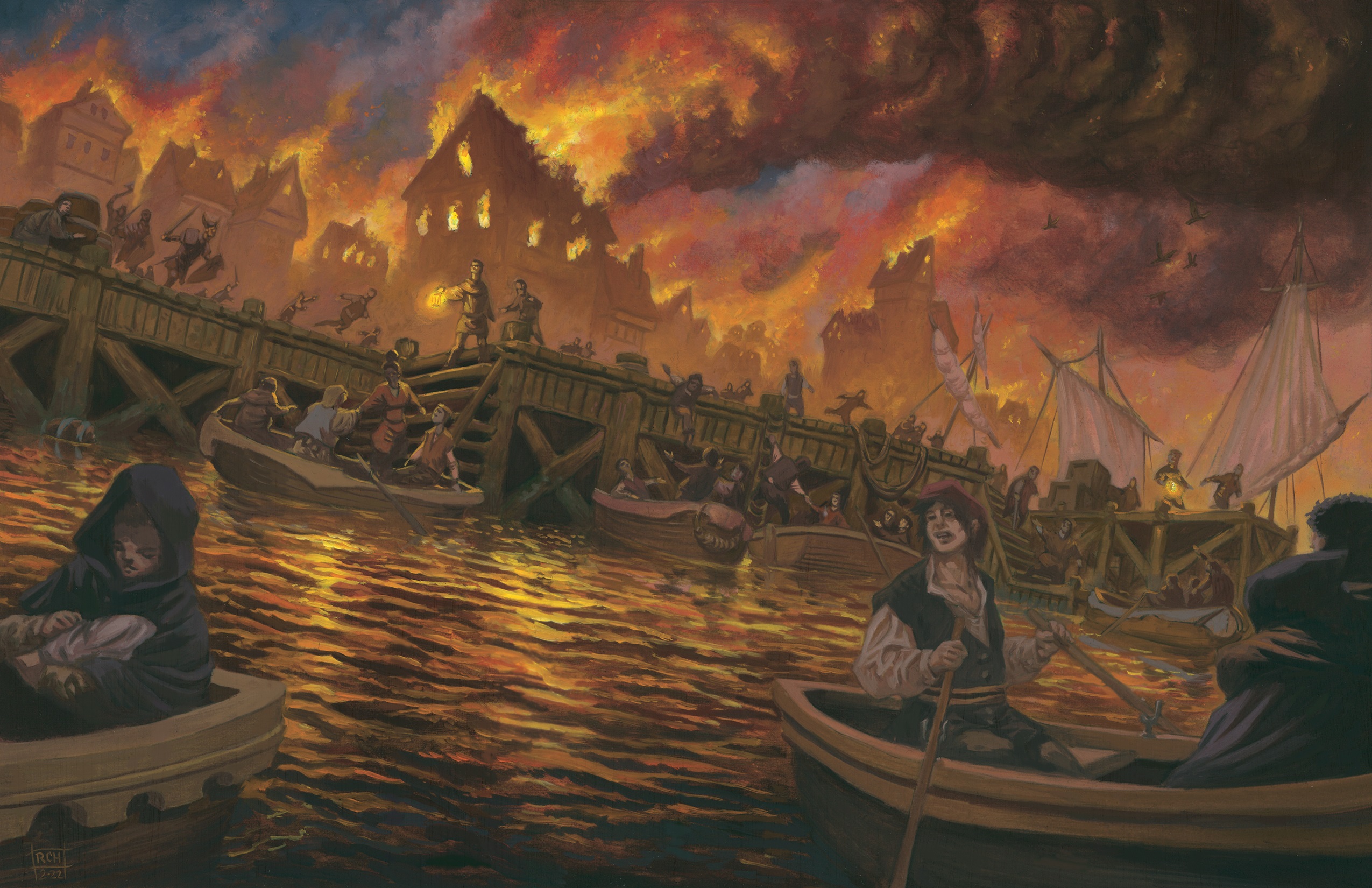
In DL:SotDQ a new group of heroes will gather in a new area of the setting. Characters find themselves embroiled in this massive, war and they have the opportunity to shape this conflict. DL:SotDQ begins in the fishing village of Vogler. The war hasn’t yet begun. No one knows about the dragon armies.
One of the first NPCs the players will meet is Darrett Highwater, the squire of a knight who has been sent to get breakfast. Highwater is returning with breakfast handpies as he meets the players. They will continue to meet Highwater over the course of the adventure as the war escalates.
But before that war starts, the players get to enjoy the Kingfisher Festival in the lovely town of Vogler. They can compete in a fishing style mini game against Mayor Raven Uth. Players should genuinely enjoy their time in Vogler—and then the first glimmers of war appear. Rumors emerge that don’t quite make sense. Ogres mercenaries begin to raid. Then Vogler becomes the first stop for an incursion by the dragon army.
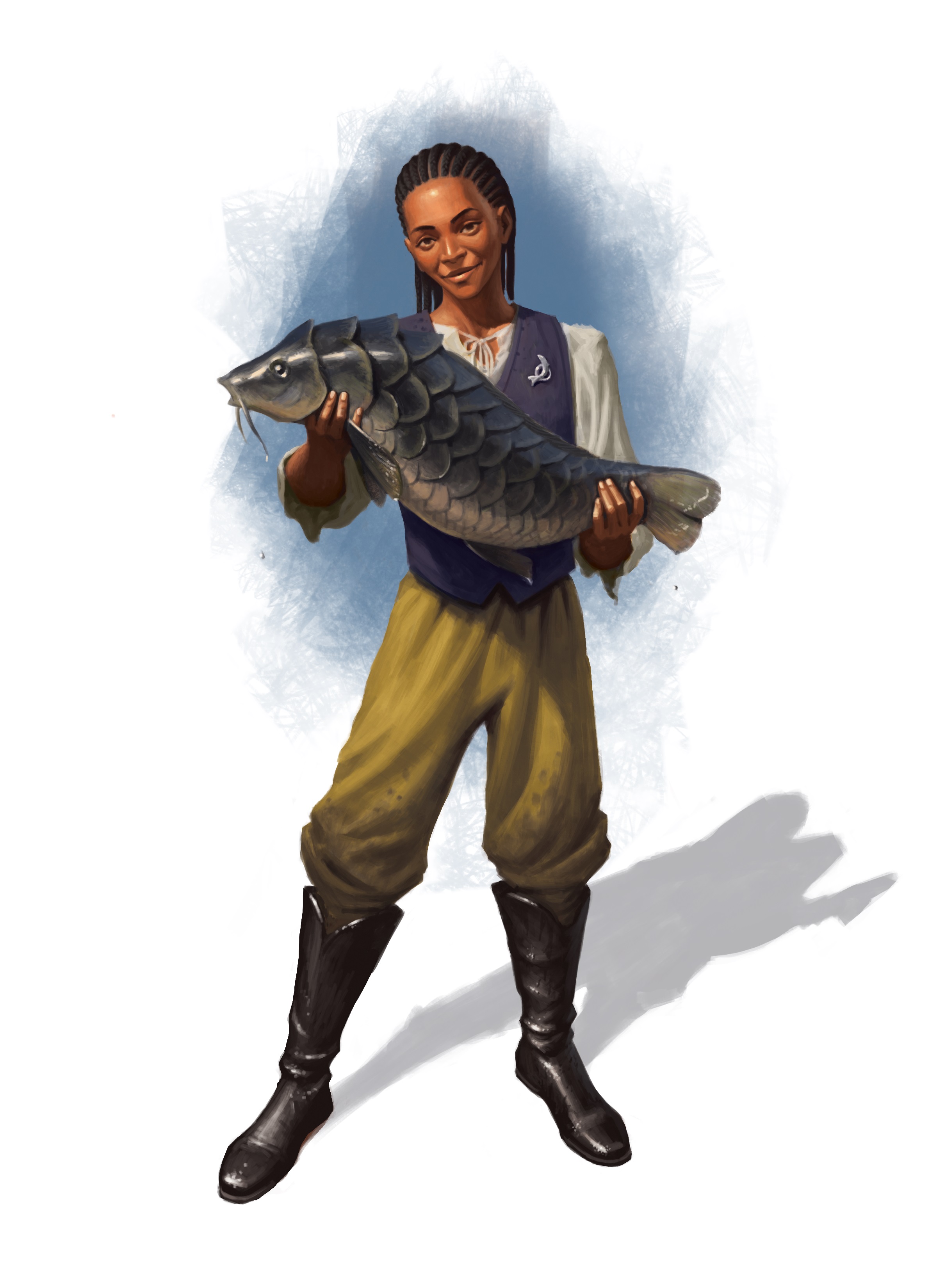
Because Vogler is unprepared for war it’s up to the PCs to decide what to do. Can they create defenses in time? Gather enough forces to defend it? Or hold off the dragon army until the citizens can evacuate to the fortified city of Kalaman? Schneider said that a large part of the adventure took inspiration from real-world history like the evacuation of Dunkirk during WWII.
But Dragonlance has a long history that includes novels, adventure modules, and video games so a common question is when does DL:SotDQ take place? For that, Schneider had two answers. “A lot of the timeline for this is very vague,” said Schneider. “The story of your Krynn and of this Dragonlance setting is very much up to DMs and players to define.”
So DMs can modify DL:SotDQ as they see fit and place it in whatever time period they choose. “But were we [the D&D team] to place this somewhere,” Schneider continued, “literally this story would actually take place before a lot of the novels, before a lot of the other stories of the Heroes of the Lance… by several months to several years.”
Schneider continued to explain that Krynn is a big planet, and compared how this particular story works to Star Wars in that there’s a whole universe of stories to tell. Those stories include everything from Rogue One to the saga, The Mandalorian to The Book of Boba Fett. “Where’s Luke and Leia?,” continued Schneider as he expanded on the analogy. “They’re out there. They’re doing their own thing, but we’re focused over here on this story.”
Because so much material already exists, don’t expect a repeat of in-depth world building. Instead Schneider compared DL:SotDQ to how Icewind Dale: Rime of the Frostmaiden introduced the Ten Towns. “A lot of the setting is revealed through play and adventure,” said Schneider
DL:SotDQ also includes three short prelude adventures that will allow new players to learn more about the world of Krynn and key story elements of it. Those include evidence that the deities are returning to the world, draconians, and learning about the mages of high sorcery. A gazetteer also helps to fill in essential material.
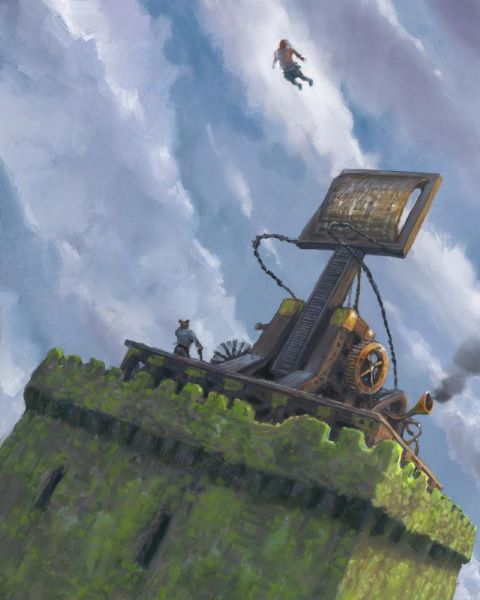
While the threats in DL:SotDQ are dire, some lighter moments are included. For example, the inventive tinker gnomes have invented something called “gnomeflingers” for rapid transportation. As the name indicates, it’s “a catapult that fires people.” Unfortunately, landing isn’t built-in. That’s a difference device called a “narrycrash.”
Kender will be a playable species as usual in DL:SotDQ. A variety of dwarves are also mentioned, but gully dwarves are not.
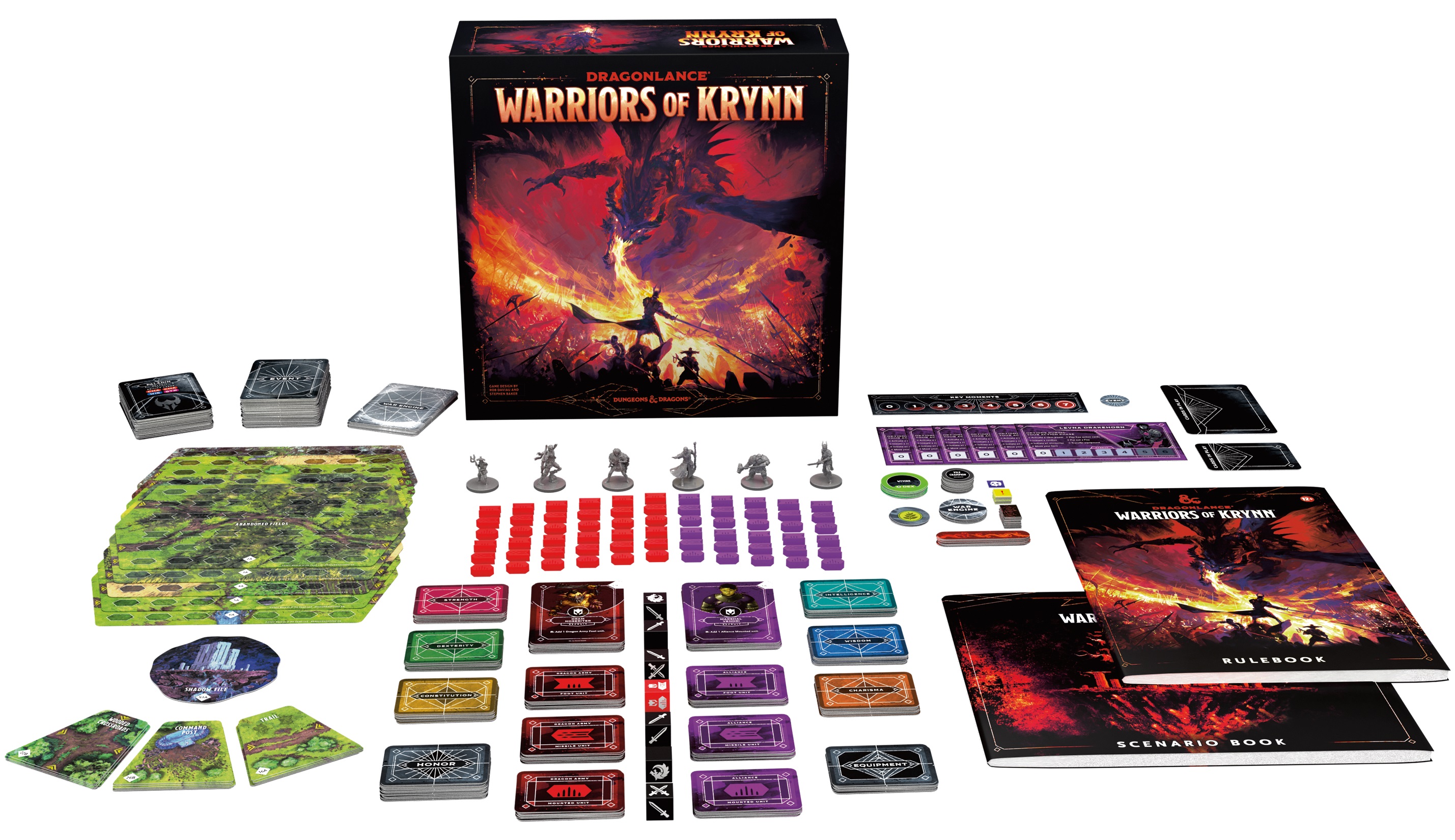
Dragonlance: Warriors of Krynn
Speaking of playable characters, one of the features if you have both DL:SotDQ and DL:WoK is that players can bring their characters into the board game, putting them into the field of battle. DL:WoK also comes with unpainted minis, but players can substitute their own minis if desired.
The board game’s lead designers are Rob Daviau and Stephen Baker. Daviau explained that DL:WoK isn’t the game most people probably expect to depict battlefield combat. “It’s not a traditional wargame,” said Daviau. “You are not commanding the units. The battle is bigger than you. You can influence the battle, but the battles are happening around you. Players are doing a special mission during the battle.”
Daviau also cautioned people against opening and reading all of the game components before beginning to play. While DL:WoK is not a legacy game where some cards are destroyed, certain elements are in shrink-wrapped packages that are marked “do not open until…” so there are surprises. Instead it directs you to “use X if Y happens.”
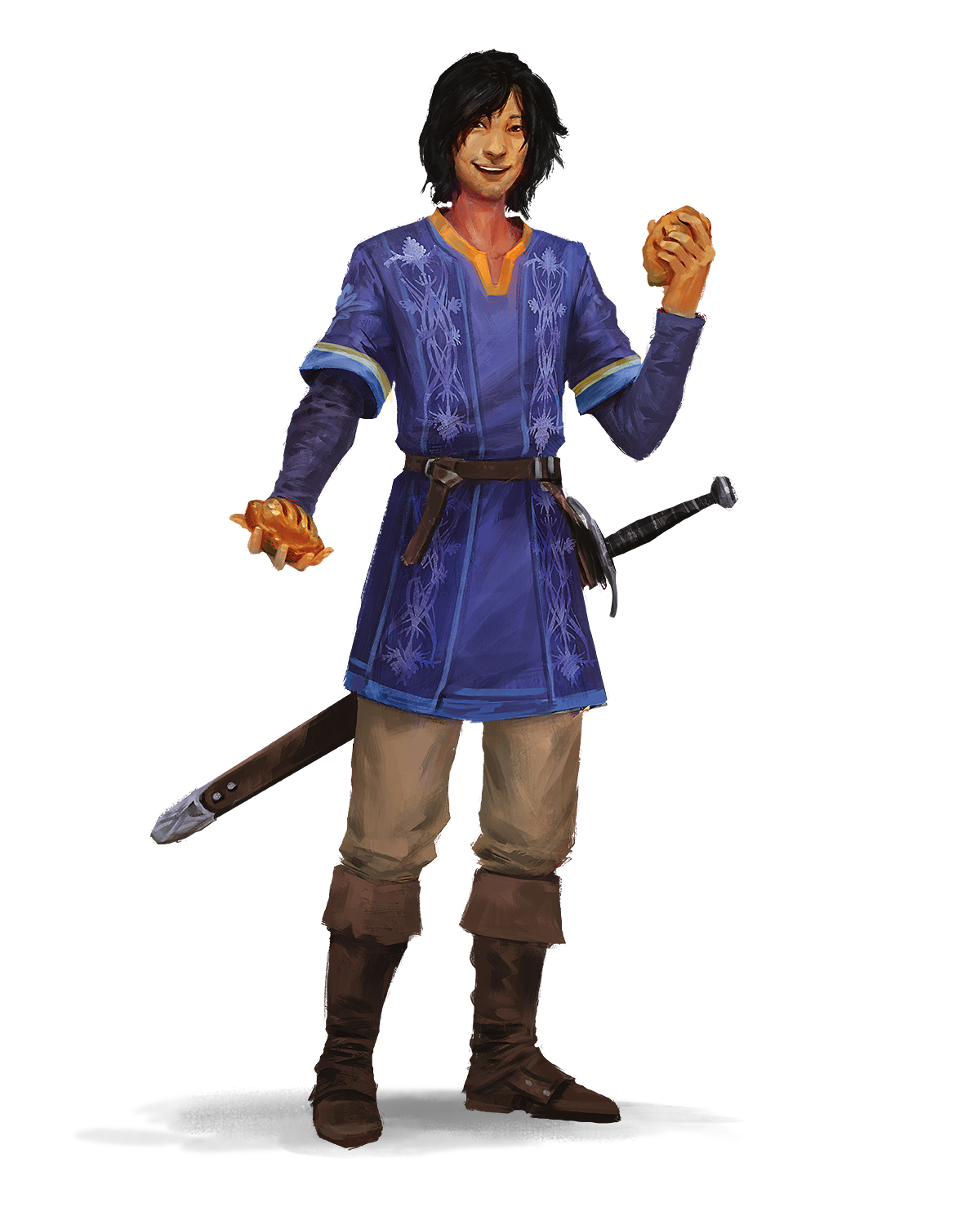
There are also recruit, veteran, and legendary cards. Those packs should also stay sealed until indicated. Players will start with low-level abilities and advance to the higher level ones. Because the battle is so big, players will get some different abilities in certain situations. Players will also encounter NPCs from DL:SotDQ like Darrett Highwater in DL:WoK (he gets a battlefield promotion quickly).
The board game also supports role-playing. For example, if a player or NPC gets the Shaken condition in the board game that effect can be role-played when the players resume the RPG side. What the players do in the board game absolutely makes a difference because the alliance army is almost always outnumbered. The players help to shift the focus so the alliance can survive. Daviau said they play-tested version where the players did nothing, and it affected the outcome for the alliance.
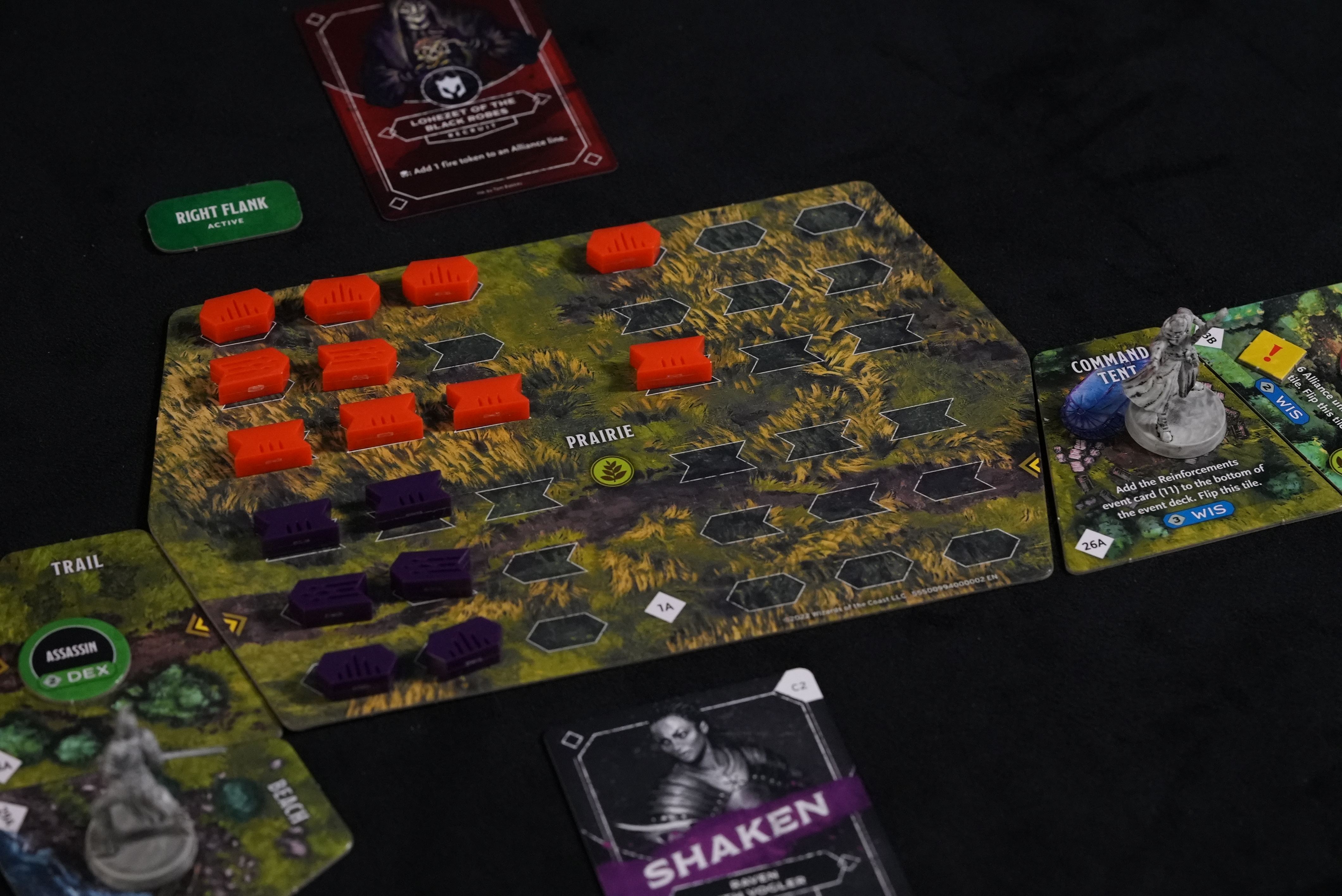
DL:WoK is a cooperative game. Not all cards are played on your turn. If you have the right cards in your hand, you can exert influence on someone else’s turn. Cards are regained through rest. The game is designed for 3-5 players so the DM can take on the role of a mercenary and play if there aren’t enough players. If there are, the DM can act as a facilitator and play the NPCs. DL:WoK is challenging. It’s hard for the alliance to get units back, and bad guys win ties in dice rolls. Interestingly, the game only uses d6s—no d20s.
DL:WoK starts with a sandbox opener to give the players a sense of how it works. A group of farmers need to be rescued. Vile champions will impede the players’ paths. As the game progresses, the battles become more complex and bigger to simulate the feel of combat against an overwhelming dragon army.
The board game has many battlefields, and the players will need to manage many flanks. One flank will always be active to create a cinematic feel, and players will move back and forth between the battlefields so it feels epic.
Daviau expects DMs to create their own scenarios to extend DL:WoK beyond what’s provided and for them to kit bash the game to handle war scenarios for any D&D or homebrew setting. If it sells well, WotC could offer future versions customized for other settings.
When a battle ends in the board game, there is an interlude to tie the RPG and board game together. Winning board game battles bring advantages to the RPG campaign. DMs are given clear instructions so it’s an easy transition between the two, such as if you had a win, do X, if it’s a hold, do Y, and if it was a loss, do Z. And that works both ways. For example, after a certain meeting in DL:SotDQ a certain vile commander won’t appear again in the board game.
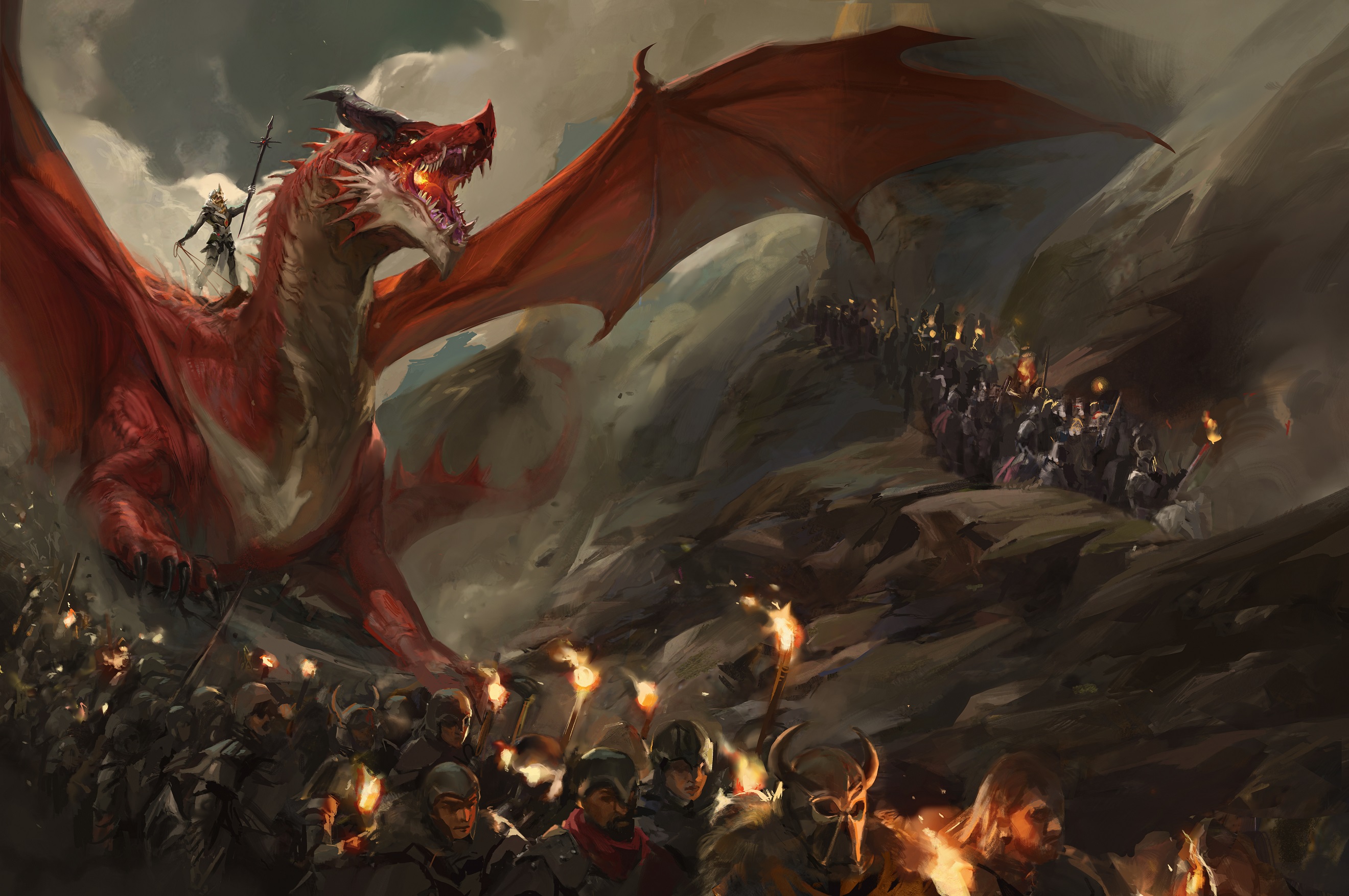
What Makes Dragonlance Different
While Dragonlance is a war story, the designers emphasize that the best war stories are about people coming together. War isn’t fun. Vogler was a lovely community until an evil goddess ruined it. The heroes are meant to be a beacon of hope.
That war also provides a certain sense of scale that the art is designed to reinforce. For example, the art scenes are big instead of zooming in on a few characters. Rather than a single full page of art to open each chapter, DL:SotDQ opens each chapter with a two-page spread so it’s more cinematic.
When asked how Dragonlance is different from Forgotten Realms or Spelljammer, Schneider said, “A lot of it is certainly thematic… [Spelljammer is] high magic, far flung, wild explorations in space, even if you’re exploring a dungeon or you go and fight a dragon, you’re doing that in context of wild explorations in space, and that has a theme that influences everything you do.”
“In Dragonlance,” Schneider continued, “you go to dungeons, you fight dragons, you encounter hobgoblins. You do all of that, but it’s in context of war. These are the enemies of a larger invading force. There is an evil queen uniting them who plans to conquer the world. You are heroes standing against all of this happening. You will have all of the typical D&D adventures you love, but the stakes are much higher.”
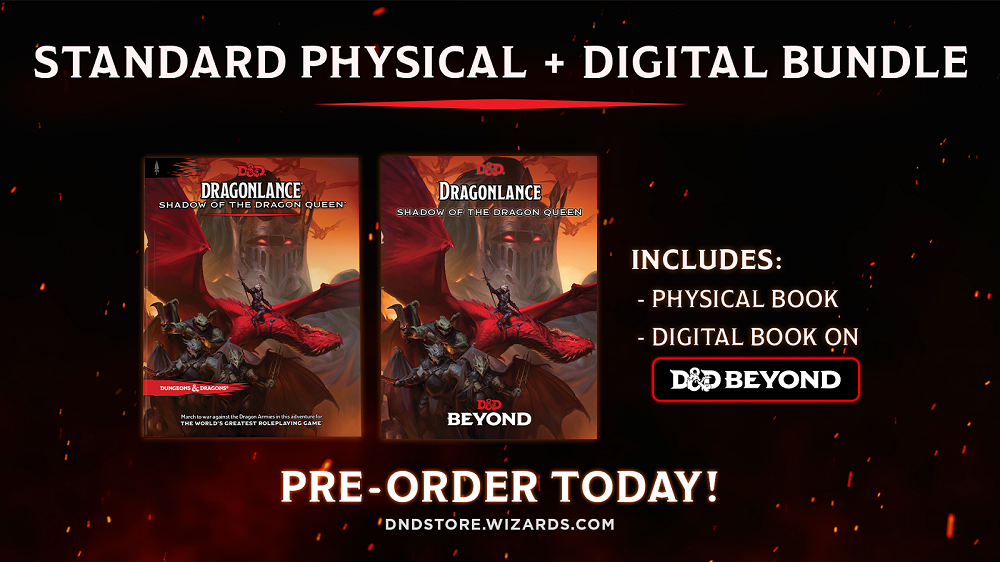
The Dragonlance: Shadow of the Dragon Queen combo bundle can be pre-ordered through the WotC website for $59.94 plus shipping. D&D: Dragonlance Deluxe, containing the board game and the physical and digital versions of the book for $154.98 plus free shipping for the U.S., UK, France, and Germany. Dragonlance: Warriors of Krynn by itself is $79.99.



